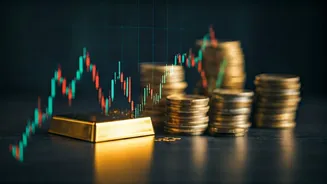Trade Deal Dynamics
Gold's decline was primarily triggered by promising advancements in the US-China trade discussions. As tensions between the two economic giants appeared
to ease, the need for investors to seek refuge in safe-haven assets like gold decreased. The anticipation of a trade agreement reduced the perceived risk associated with global markets, which led investors to redirect their capital towards assets considered to have higher growth potential. This change in sentiment substantially influenced the demand for gold, marking a noteworthy shift in the precious metal's trading activity and market valuation. The dynamics underscored the sensitivity of gold prices to geopolitical and economic developments.
Investor Sentiment Shifts
The evolving investor sentiment played a pivotal role in the reduction of gold prices. With signs of improvement in US-China relations, the overall market confidence improved, resulting in decreased demand for traditional safe havens. Investors began to reconsider their portfolios and adjust their investment strategies in accordance with the perceived lower risk. The reallocation of funds out of gold and into assets with higher growth potential further suppressed the price of the metal. This adjustment reflects a wider trend where investor behavior is significantly shaped by the prevailing macroeconomic conditions and outlook for global trade and economic growth. The transition highlights the volatility of gold's value and its dependency on external influences.
Haven Demand Erosion
The progress in trade talks between the US and China directly eroded the safe-haven demand that usually supports gold prices. Gold traditionally acts as a hedge against economic downturns and geopolitical uncertainties. But, with the reduced perceived risk associated with the global trade environment, gold's appeal as a safe harbor diminished. Investors, now less concerned about potential market instability due to trade disputes, saw less need to include gold in their portfolios. This reduction in the metal’s safe-haven status directly translated into a fall in demand and consequently, a downward pressure on gold prices. This shift exemplifies the interconnected nature of the financial markets and how global events can influence the investment choices of individuals and institutions alike.
Broader Market Implications
The changes in gold prices carry larger implications for financial markets overall. The decrease in gold prices signals a more optimistic outlook on the global economy and indicates increased investor confidence. The shift of investments away from safe-haven assets suggests an active search for higher-return assets, potentially boosting the stock markets. Moreover, the dynamic underlines the importance of closely monitoring geopolitical events and trade negotiations, as these factors critically influence market behavior and asset valuations. This scenario shows how shifts in investor sentiment and economic conditions can cause significant market movements, shaping the overall trajectory of the financial markets and reflecting the intertwined nature of global trade.














